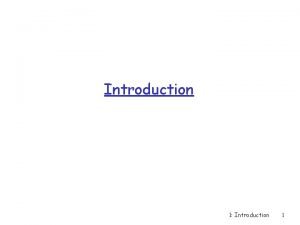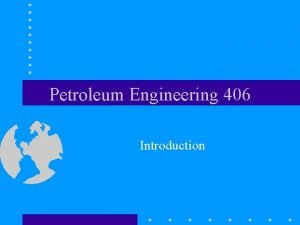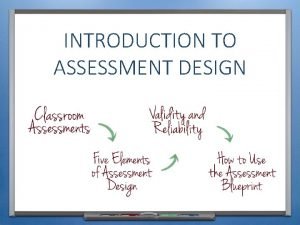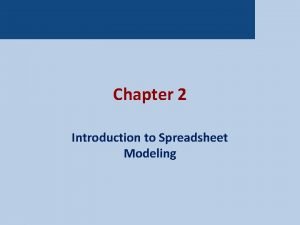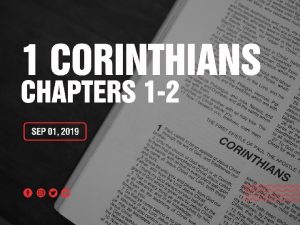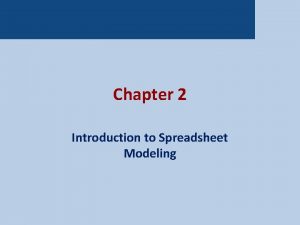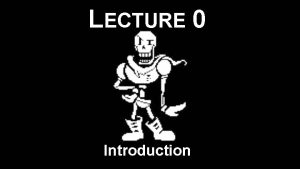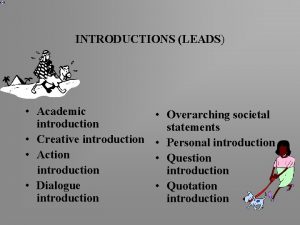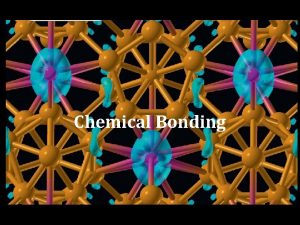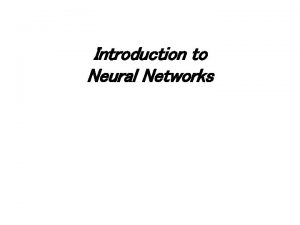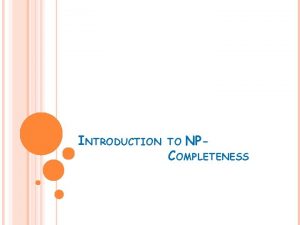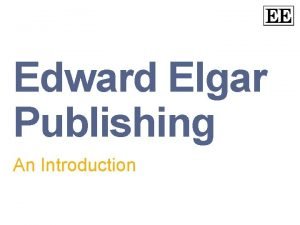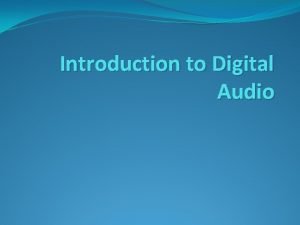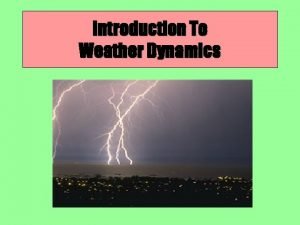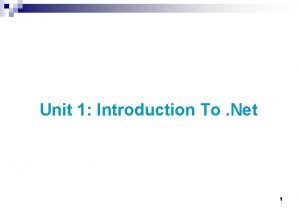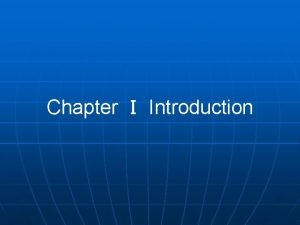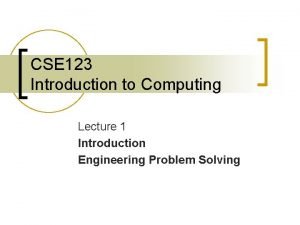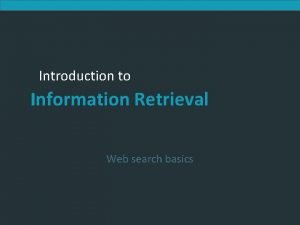JUNCTIONA L ARRHYTHMI AS INTRODUCTION If the SA



































- Slides: 35


JUNCTIONA L ARRHYTHMI AS

INTRODUCTION § If the SA node and atria fail to generate impulses the atrioventricular (AV) node may assume the role of secondary pacemaker. § Located in the lower right atrium near the septum. § The cardiac tissue surrounding the AV node is usually called the AV junction.

HEART CONDUCTION SYSTEM ü SA node ü Controls HR, called the “pacemaker” of the heart ü Found in RA near entrance to vena cava ü Special conduction system ü SA node ü Starts cardiac cycle ü Impulse spreads to L atrium through Bachman’s bundle ü AV node ü Delays signal slightly ü Bundle of HIS ü R and L bundle branches ü Purkinje fibers

junctional dysrhythmia § P wave § May be absent § Buried in QRS § If present § inverted in leads I, II, and a. VF § Inverted after QRSPR interval < 0. 12 secs § Rate: Varies § Narrow QRS complex

junctional dysrhythmia 6

AVN MSSHERMEH@YAHOO. COM

junctional dysrhythmia § The Av Junction Is Capable Of Initiating Electrical Impulses. § Impulses That Start In The Av Node Or Av Junctional Area Are Called Junctional Or Nodal Rhythms. § The Av Junction Is Not As Efficient As The Sa Node Therefore It Has A Slower Rate. § The Inherent Heart Rate Of The Av Junctional Area Is 40 To 60 Impulses Per Minute.

junctional dysrhythmia Inverted p wave AVN § If the impulse originates high in the av junctional area the atria depolarize quickly in a retrograde manner. § The p wave will be upside down or retrograde. § Since the impulse distance is shorter to depolarize the ventricles the PR interval is less than 0. 12 seconds.

Buried or hidden p wave AVN § If The Impulse Originates In The Mid Av Junctional Area The Distance The Impulse Must Travel Up Through The Atria And Down The Ventricles Is Almost The Same. § This Causes The Atria And Ventricles To Depolarize At Almost The Same Time. § The Force Of Atrial Depolarization Is Less Than The Force Of Ventricular Depolarization The P Wave Is Hidden By The Qrs. § The P Wave Is Hidden And A Pri Will Not Be Seen.

RETROGRADE P WAVE AVN § Impulse Originates In The Lower Part Of The Av Junctional Area. § The Impulse Distance Is Greater To The Atria Than Ventricles. § The Atria Depolarize Slightly Later Than The Ventricles. § The P Wave Appears After The Qrs Complex. § No Measurable Pri, P Wave Is Inverted.

junctional dysrhythmia Types: § Premature Junctional Contractions § Junctional Escape Rhythm § Accelerated Junctional Rhythm § Junctional Tachycardia § Reentrant Tachycardia § AVNRT

PREMATURE JUNCTIONAL CONTRACTIONS (PJC)

§ PREMATURE JUNCTIONAL CONTRACTIONS R-R interval is shorter (PJC) § Beat is early, narrow QRS complex § Inverted P wave § P wave can be buried in QRS complex

Cause of PJC Caused by increased irritability of The cardiac cells. May be caused by: § Digitalis, atropine, § Nicotine, caffeine, and amphetamines. § Pain, fever, fear, anxiety, exercise, sudden excitement.

PREMATURE JUNCTIONAL CONTRACTIONS (PJC) Rate: Depends on rate of underlying rhythm Rhythm: Irregular whenever a PJC occurs P Waves: Absent, inverted, buried, or retrograde in the PJC retrograde PR Interval: None, short, or QRS: Normal (0. 06– 0. 10 sec)

§ PREMATURE JUNCTIONAL CONTRACTIONS An individual complex. (PJC) § Originates from a single site in the av junctional area. § Occurs earlier than the next expected complex of the underlying rhythm. § PJC’s are not rhythms. § Has the same characteristics as other junctional complexes.

PREMATURE JUNCTIONAL CONTRACTIONS (PJC) The pjc may be followed by a complete Compensatory pause which allows the Underlying rhythm to depolarize at its Normal rate.

JUNCTIONAL ESCAPE RHYTHM

JUNCTIONAL Rate: 40– 60 bpm ESCAPE RHYTHM Rhythm: Regular § § § P Waves: Absent, inverted, buried, or retrograde § PR Interval: None, short, or retrograde § QRS: Normal (0. 06– 0. 10 sec)

JUNCTIONAL ESCAPE RHYTHM

JUNCTIONAL BRADYCARDI A

JUNCTIONAL § All impulses originate from a single site within BRADYCARDIA the AV junctional area at a rate of <40 impulses § § § per minute. P wave can be inverted, buried, or retrograde. If a PRI is present it will usually be less than 0. 12 seconds. The QRS is <0. 12 seconds.

JUNCTIONAL BRADYCARDIA

§ JUNCTIONAL BRADYCARDIA The rate can vary, but must be less than 40 per minute. § This dysrhythmia may become symptomatic is the rate falls significantly. § Only a junctional rhythm with a rate below 40 can be called a junctional bradycardia.

ACCELERATED JUNCTIONAL RHYTHM

ACCELERATED JUNCTIONAL RHYTHM Rate: 61– 100 bpm Rhythm: regular P waves: absent, inverted, buried, or retrograde PR interval: none, short, orretrograde QRS: normal (0. 06– 0. 10 sec)

ACCELERATED JUNCTIONAL RHYTHM § Rate Between 61 And 100 Impulses Per Minute. § P Waves Are Inverted, Buried, Or Retrograde. § PRI If Present Is <0. 12 Seconds. § R To R Intervals Are Regular, QRS Is <0. 12 Seconds. § The Rate Can Vary But Must Be Between 61 And 100 Impulses Per Minute.

ACCELERATED JUNCTIONAL RHYTHM • Origin: AV Node or Junctional Tissue • Mechanism: Abnormal Automaticity • Characteristics: Occurs when cells depolarize at a rate faster than the Sinus Node

JUNCTIONAL TACHYCARDIA

JUNCTIONAL TACHYCARDIA § Both Accelerated Junctional And Junctional Tachycardia May Be Caused By Heart Disease Or Drugs Such As Atropine, Caffeine, Or Amphetamines. § Pain, Fever, Or Acute Anemia Can Cause These § Dysrhythmias. Either Of The Conditions Can § Become Serious. If The Rate Increases § Significantly Or The Patient Becomes Symptomatic.

JUNCTIONAL TACHYCARDIA § § § Rate: 101– 180 bpm Rhythm: Regular P Waves: Absent, inverted, buried, or retrograde PR Interval: None, short, or retrograde QRS: Normal (0. 06– 0. 10 sec)

JUNCTIONAL TACHYCARDIA

NORMAL SINUS RHYTHM JUNCTIONAL TACHYCARDIA

QUESTION?
 Hát kết hợp bộ gõ cơ thể
Hát kết hợp bộ gõ cơ thể Bổ thể
Bổ thể Tỉ lệ cơ thể trẻ em
Tỉ lệ cơ thể trẻ em Chó sói
Chó sói Chụp phim tư thế worms-breton
Chụp phim tư thế worms-breton Hát lên người ơi alleluia
Hát lên người ơi alleluia Các môn thể thao bắt đầu bằng tiếng chạy
Các môn thể thao bắt đầu bằng tiếng chạy Thế nào là hệ số cao nhất
Thế nào là hệ số cao nhất Các châu lục và đại dương trên thế giới
Các châu lục và đại dương trên thế giới Công thức tiính động năng
Công thức tiính động năng Trời xanh đây là của chúng ta thể thơ
Trời xanh đây là của chúng ta thể thơ Mật thư tọa độ 5x5
Mật thư tọa độ 5x5 Phép trừ bù
Phép trừ bù độ dài liên kết
độ dài liên kết Các châu lục và đại dương trên thế giới
Các châu lục và đại dương trên thế giới Thể thơ truyền thống
Thể thơ truyền thống Quá trình desamine hóa có thể tạo ra
Quá trình desamine hóa có thể tạo ra Một số thể thơ truyền thống
Một số thể thơ truyền thống Cái miệng bé xinh thế chỉ nói điều hay thôi
Cái miệng bé xinh thế chỉ nói điều hay thôi Vẽ hình chiếu vuông góc của vật thể sau
Vẽ hình chiếu vuông góc của vật thể sau Thế nào là sự mỏi cơ
Thế nào là sự mỏi cơ đặc điểm cơ thể của người tối cổ
đặc điểm cơ thể của người tối cổ V cc cc
V cc cc Vẽ hình chiếu đứng bằng cạnh của vật thể
Vẽ hình chiếu đứng bằng cạnh của vật thể Fecboak
Fecboak Thẻ vin
Thẻ vin đại từ thay thế
đại từ thay thế điện thế nghỉ
điện thế nghỉ Tư thế ngồi viết
Tư thế ngồi viết Diễn thế sinh thái là
Diễn thế sinh thái là Các loại đột biến cấu trúc nhiễm sắc thể
Các loại đột biến cấu trúc nhiễm sắc thể Các số nguyên tố là gì
Các số nguyên tố là gì Tư thế ngồi viết
Tư thế ngồi viết Lời thề hippocrates
Lời thề hippocrates Thiếu nhi thế giới liên hoan
Thiếu nhi thế giới liên hoan





































